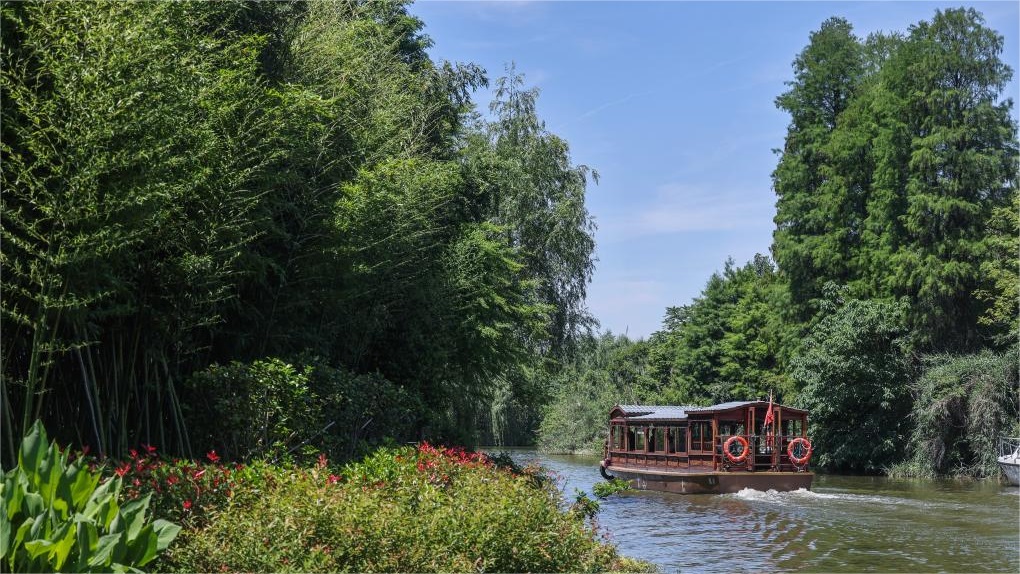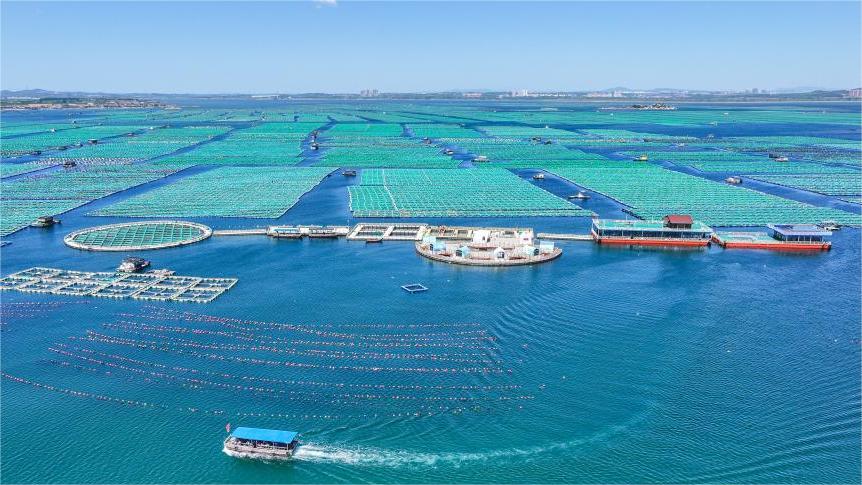Encountering the splendor of the 4,000-year-old ancient Shu civilization at Sanxingdui
Editor's Note: Chinese civilization has moved forward with enduring vitality throughout history. Discoveries at the Liangzhu archaeological site that reveal the origins of Chinese civilization, along with the ancient Chinese characters on oracle bones from the Yin Ruins and the cultural treasures of the Sanxingdui Ruins, all testify to China's splendid civilization.
Chinese civilization, spanning ancient and modern times, radiates brilliance. It is deeply rooted in the nation's identity and the wisdom of its people. To truly understand China, one must grasp the essence of this civilization.
People's Daily Online presents the "Tracing the origins of Chinese civilization" series of promotional videos. These videos explore the treasured aspects of Chinese culture, decipher the ancient codes of civilization that have been passed down over thousands of years, and share how China's ancient civilization continues to thrive in modern times.
During his visit to the Sanxingdui Museum in July 2023, Chinese President Xi Jinping remarked: "The archaeological achievements of Sanxingdui are world-renowned, demonstrating the fruits of a civilization more than 4,000 years ago. They also provide more convincing archaeological evidence for the integration of Chinese civilization as well as the mutual influence of the ancient Shu civilization and the Central Plains civilization."
The Sanxingdui Ruins site, located in Guanghan, a county-level city in Deyang, southwest China's Sichuan Province, offers a glimpse into the ancient Shu civilization that thrived thousands of years ago. The site was the biggest and most culturally significant city in the Yangtze River region during that period, showing the advanced level of development and unique characteristics of the Shu people.
Under the scorching sun, dust filled the air. Large parasols stood at an excavation site at the Sanxingdui Ruins. Xu Danyang, a researcher of the Sichuan Provincial Cultural Relics and Archaeology Research Institute, was at work.
Over four years, Xu has unearthed many cultural relics, with the challenges encountered during his excavations etched in his memory.
"In the sacrificial pits at Sanxingdui, we discovered a significant amount of ivory. After years of burial, their texture had softened, resembling melting ice creams," Xu recalled.
After considering various opinions, the team ultimately decided to use moistened high-polymer bandages to cover the ivory to preserve their shape and then carefully excavated them one by one.
At the excavation site, many villagers helped dig under professional guidance.
"A lot of archaeological work is done outdoors in the fields, where you interact with the land, engage with local villagers, and meet all kinds of people." said Xu, adding that field archaeology is at the forefront of the discipline, where new discoveries can happen at any moment. These discoveries are always the first to be presented to the public.
New archaeological techniques and methods, driven by technological advancements, have made the excavation and restoration of cultural relics more scientific, systematic, and sustainable.
Archaeological excavations and restoration work at the Sanxingdui Ruins happen simultaneously.
Xie Li, an artifact restoration specialist at the Sanxingdui Museum, was cleaning a bronze human head sculpture.
"We employ various observation devices, such as the stereomicroscope I am currently utilizing. This instrument enables me to closely examine the artifact's intricate details, facilitating a more precise restoration process," Xie explained.
Xie has worked on cultural relic restorations for 10 years since graduating from university. While many people may find the work repetitive and dull, Xie finds it invigorating.
"This occupation is far from monotonous, as every restored artifact possesses its own distinctiveness, offering a constantly evolving experience," Xie said.
"Every artifact is precious because it is irreplaceable and non-renewable," said Xie.
Every step in the restoration process is crucial and requires patience. Xie often spends an entire day working on a single artifact.
"Every artifact has a story behind it, not just its own story in the traces of history, but also the story of the restorers’ efforts. It will also carry the stories of those who come to witness it," said Xie.
On July 26, 2023, the new building of the Sanxingdui Museum opened. With a floor area of 54,400 square meters, it is the largest single structure among all archaeological museums in southwest China.
Lei Yu, curator of the Sanxingdui Museum, said that the unearthed relics from the ruins include a wide array of jade and bronze artifacts. Another notable collection comprises distinctive Sanxingdui-style items, such as a giant standing bronze figure, bronze divine trees, and bronze masks. These treasures demonstrate the beauty and grandeur of the Sanxingdui Ruins, capturing the public's curiosity.
Lei began working at the Sanxingdui Ruins in 1984. Shortly after, two accidental discoveries in 1986 had a profound impact both domestically and internationally, leaving a lasting impression on Lei.
In July 1986, workers at a brick factory stumbled upon a burial site while excavating soil. They uncovered more than 10 pieces of jade and stone artifacts, leading to the discovery of the No. 1 sacrificial pit.
Less than a month later, while digging soil just 30 meters from the No. 1 pit, workers discovered more relics, leading to the excavation of the No. 2 sacrificial pit.
The discovery of these two sacrificial pits astonished the world and is widely regarded as one of the most significant archaeological findings of the 20th century.
"On the day the new Sanxingdui Museum building opened, President Xi visited the restoration and preservation center," Lei said. "He inquired about the combination of the gold foil pieces and even stooped down to examine the bronze sun-shaped object, which was under restoration. He also engaged in a discussion with us about the five parts of the object. His deep familiarity and expertise in the cultural relics of Sanxingdui left a lasting impression on me."
As of 2023, Lei had worked at Sanxingdui for 39 years.
"President Xi told me that it is not easy to dedicate oneself to something for almost 40 years. These words were highly encouraging and motivating for me," he said.
Lei stated that the Sanxingdui Ruins site reveals the civilization achievements of the ancient Shu people from over 4,000 years ago and demonstrates that the ancient Shu civilization, represented by Sanxingdui, is an integral part of Chinese civilization.
Photos
Related Stories
- Int'l digital nomads embrace countryside life in China
- Four swivel bridges rotate into place in Sichuan
- Exploring the charm of long-spout teapot art at Chengdu's century-old Heming Tea House
- In pics: blooming magnolia flowers in village of SW China's Sichuan
- In pics: Workers make soy sauce in Hejiang, SW China's Sichuan
Copyright © 2024 People's Daily Online. All Rights Reserved.









